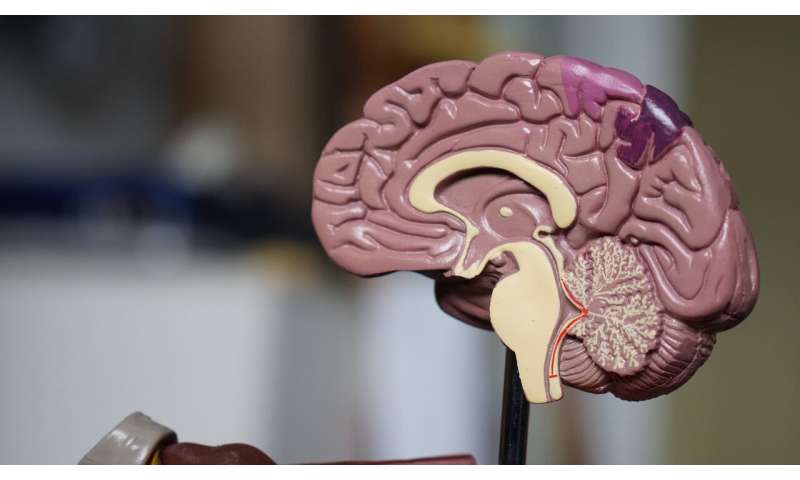Study reveals greater excitability in social brain regions of autistic men compared to women


New insight on differences in the brains of men and women with autism has been published today in the open-access journal eLife.
The study suggests that autistic men, but not women, have enhanced neural excitability in specific brain regions that are important for social cognition and self-reflection, and this may differentially impact their ability to navigate social situations.
These findings support the idea that imbalances between excitation and inhibition in the brain affect some individuals with autism more than others. They also pave the way for further research to measure the imbalance of excitation and inhibition with non-invasive neuroimaging techniques. This could help scientists evaluate how different treatments may affect this aspect of the brain’s biology.
The brain possesses its own natural balance between excitation and inhibition, but this balance differs among individuals. Higher levels of excitation are linked to the function of some autism-relevant genes that are found on the sex chromosomes, and can also be affected by hormones produced in higher quantities in men, such as testosterone. Differences in these sex-related mechanisms are important as autism affects males more than females.
“With this study, we wanted to gain a better understanding of how excitation-inhibition imbalance may affect autistic men differently to women,” says one of the study’s lead authors, Stavros Trakoshis, a graduate student at the Laboratory for Autism and Neurodevelopmental Disorders at the Istituto Italiano di Tecnologia (IIT) in Rovereto, Italy, and also based at the University of Cyprus.
To do this, Trakoshis and his colleagues started by using a computer model that simulates excitatory and inhibitory neurons as they interact and influence each other within the brain. The model allowed them to control the ratio of mixture between excitation and inhibition, simulated these interactions, and then reported neuronal population responses over time. The outputs are similar to data commonly measured with neuroimaging techniques, such as electroencephalography (EEG) and functional magnetic resonance imaging (fMRI).
Trakoshis and the team observed that specific statistical attributes of the simulated data changed systematically with changes to the underlying excitation-inhibition ratios. These statistical changes were also validated using data from fMRI scans of brains in living mice that were given drugs to induce enhanced excitation.
After validating that non-invasive fMRI can reveal changes to the underlying cellular excitation-inhibition ratio, the team next applied their technique to fMRI data from adult men and women with autism. This revealed that autistic men, but not women, have atypically enhanced excitation in a brain region called the medial prefrontal cortex. The function of this brain region is typically associated with social cognition and self-reflection. The analysis also showed that, in women with autism, a more intact medial prefrontal cortex response (with less enhanced excitation, for example) was associated with better camouflaging of social difficulties in real-world social situations.
“Our work suggests that sex-related biological mechanisms could be integral for how excitation-inhibition balance develops in autistic men versus women,” says senior author Michael Lombardo, Director of the Laboratory for Autism and Neurodevelopmental Disorders at the IIT. “This could help explain why we see phenomena such as camouflaging manifesting differently in autistic males versus females.”
Source: Read Full Article